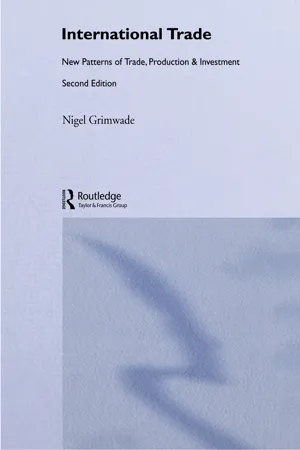CHAPTER OUTLINES: Introduction. The Growth of World Output - historical perspective, post-war trends in world output, the 1973-74 Oil Crisis, the 1979-80 oil crisis, the 1990-93 downturn, the East Asian financial crisis. The Growth of World Trade. Changes in the Commodity Composition of World Trade - primary products: food, agricultural raw materials, ores and minerals and non-ferrous metals, fuels; manufactures. Changes in the Geographical Composition of World Trade. The Regional Structure of World Trade. Conclusion.
Introduction
The fifty years or so that have passed since the ending of the Second World War have been a period of extremely rapid economic growth. On average, world output has grown at a faster rate than in any other period of history. A major cause of the growth in output has been the rapid growth of world trade. Throughout this period, world trade consistently grew faster than world output. This, in turn, was the result of a major increase in the degree of international specialisation between countries. An increase in the degree of specialisation would result in an increase in world trade even with no increase in world output. Hence, the fact that trade has been growing faster than output implies an increase in the degree of specialisation. Although this has taken place in all sectors, the trend has been most pronounced for manufacturing.
The much faster expansion of trade relative to output has also meant that those countries that have shared in the process, have become increasingly interdependent. The proportion of output that is traded has increased in most regions of the world. This means that 'shocks' in one part of the world economy are much more quickly transmitted to other parts. For example, a downturn in the level of economic activity in one country is likely to cause a similar downturn in those countries that depend on the former for export markets. It has also meant that it is more difficult than ever before for governments to pursue independent macroeconomic policies.
At the same time, the growth of world trade has brought important changes in the structure or composition of world trade. First, there have been some important changes in the geographical composition of world trade. This shows the share of world trade accounted for by different countries or regions. Secondly, structural shifts have also taken place in the commodity composition of world trade. This shows the share of different product groups in world trade. For example, the share of primary products has tended to fall while that of man...
